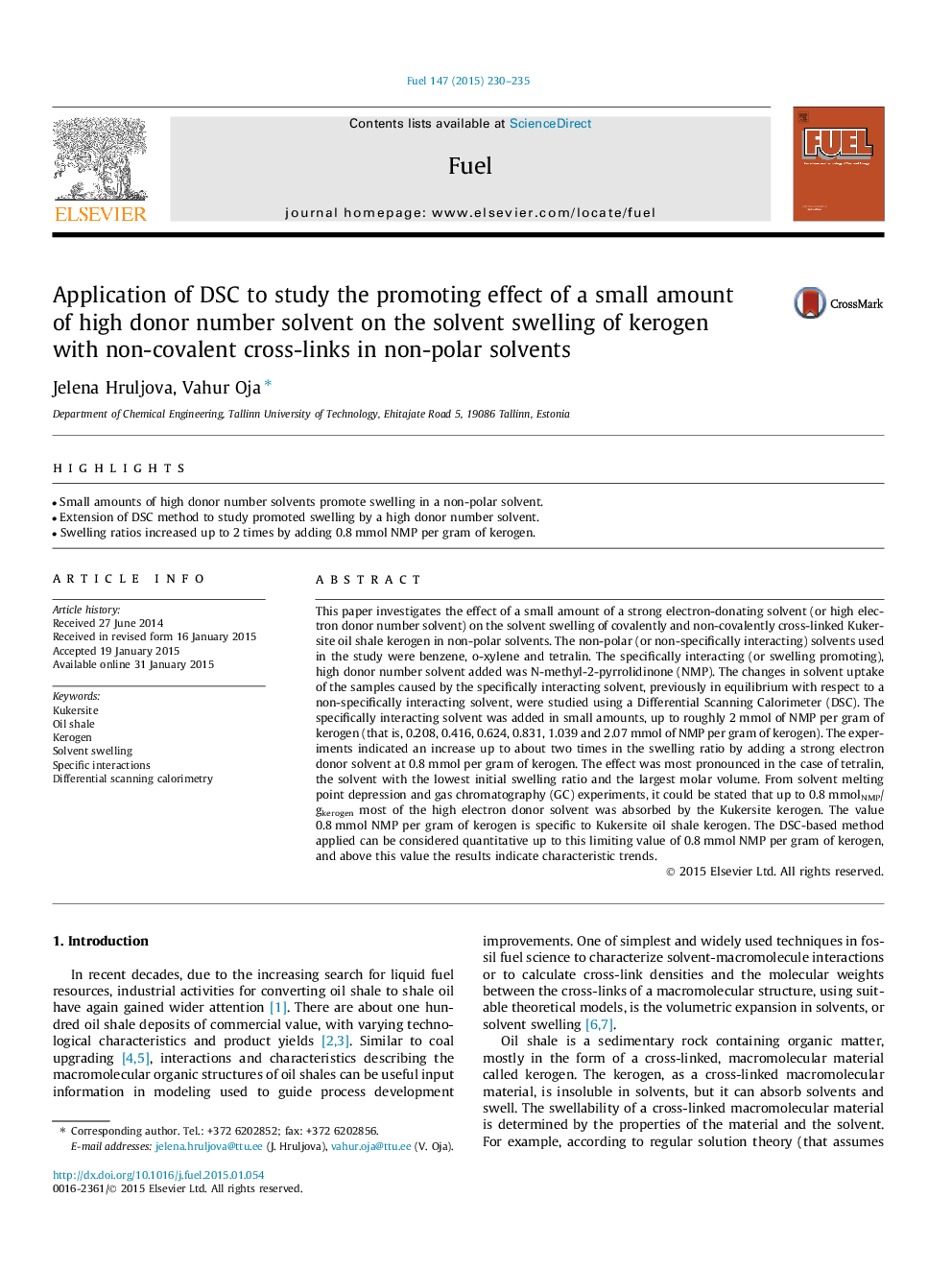| کد مقاله | کد نشریه | سال انتشار | مقاله انگلیسی | نسخه تمام متن |
|---|---|---|---|---|
| 205962 | 461131 | 2015 | 6 صفحه PDF | دانلود رایگان |

• Small amounts of high donor number solvents promote swelling in a non-polar solvent.
• Extension of DSC method to study promoted swelling by a high donor number solvent.
• Swelling ratios increased up to 2 times by adding 0.8 mmol NMP per gram of kerogen.
This paper investigates the effect of a small amount of a strong electron-donating solvent (or high electron donor number solvent) on the solvent swelling of covalently and non-covalently cross-linked Kukersite oil shale kerogen in non-polar solvents. The non-polar (or non-specifically interacting) solvents used in the study were benzene, o-xylene and tetralin. The specifically interacting (or swelling promoting), high donor number solvent added was N-methyl-2-pyrrolidinone (NMP). The changes in solvent uptake of the samples caused by the specifically interacting solvent, previously in equilibrium with respect to a non-specifically interacting solvent, were studied using a Differential Scanning Calorimeter (DSC). The specifically interacting solvent was added in small amounts, up to roughly 2 mmol of NMP per gram of kerogen (that is, 0.208, 0.416, 0.624, 0.831, 1.039 and 2.07 mmol of NMP per gram of kerogen). The experiments indicated an increase up to about two times in the swelling ratio by adding a strong electron donor solvent at 0.8 mmol per gram of kerogen. The effect was most pronounced in the case of tetralin, the solvent with the lowest initial swelling ratio and the largest molar volume. From solvent melting point depression and gas chromatography (GC) experiments, it could be stated that up to 0.8 mmolNMP/gkerogen most of the high electron donor solvent was absorbed by the Kukersite kerogen. The value 0.8 mmol NMP per gram of kerogen is specific to Kukersite oil shale kerogen. The DSC-based method applied can be considered quantitative up to this limiting value of 0.8 mmol NMP per gram of kerogen, and above this value the results indicate characteristic trends.
Journal: Fuel - Volume 147, 1 May 2015, Pages 230–235